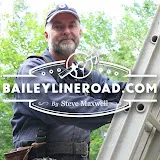0:00
In video number two of this pine chest restoration series, I was showing you how I was re-gluing
0:16
some things. You may recall that this strip had come detached from the top and that's
0:22
because the grain of the top runs in this direction and the grain of the strips runs
0:28
in this direction so it's really a design flaw. The top's going to expand and contract
0:35
seasonally and the length of this strip is not going to change so it broke the glue joint there
0:41
I glued it back together again. There's really no satisfactory way of, no perfect way of fixing this
0:50
so to help things stay together more in the future, in addition to the very small nails
0:57
that this was originally assembled with, I've used some screws here, flathead wood screws
1:04
countersunk in to hold it together. Nothing too fancy there but the drill bit that I used
1:11
to make holes for these screws is kind of interesting and I thought you might like to see it
1:16
It's kind of an adjustable bit set. I have a whole collection here. I happened to get
1:23
buy this from Lee Valley Tools but this is the one I used. I don't know if you can see here but
1:32
the drill bit itself is tapered which is useful when you're driving wood screws because it creates
1:39
a wider hole up here so that this part of the screw and the top part of the threads don't
1:45
grip in the first part of the hole but because the drill bit tapers, the threads of the screw down
1:52
here get a grip in the wood. So that's one interesting thing going on. The other is this
2:00
countersink attachment here. This can vary in height depending on where this collar
2:07
is locked onto the drill bit and as you can see I have adjusted it to fit this size of screw
2:17
which is as long as the wood is deep. It actually has poked through very slightly
2:27
very slightly in a few places. Here's one of them but that's no problem. I'm going to be
2:32
sanding that off because don't forget we're going to apply a milk paint finish to this
2:38
and if there's minor imperfections that's fine. I'll be explaining how that milk paint finish sticks to the existing finish here which isn't usually the case but for
2:52
now I just thought I'd show you these strips and this anchoring system. I mean nothing fancy but
2:59
it's just creating a more solid foundation for the finished piece that we hope to have
3:07
Thanks for watching. Click here to join the thousands of people who get the Bailey Line Road
3:13
hands-on how-to newsletter for free every Saturday morning


